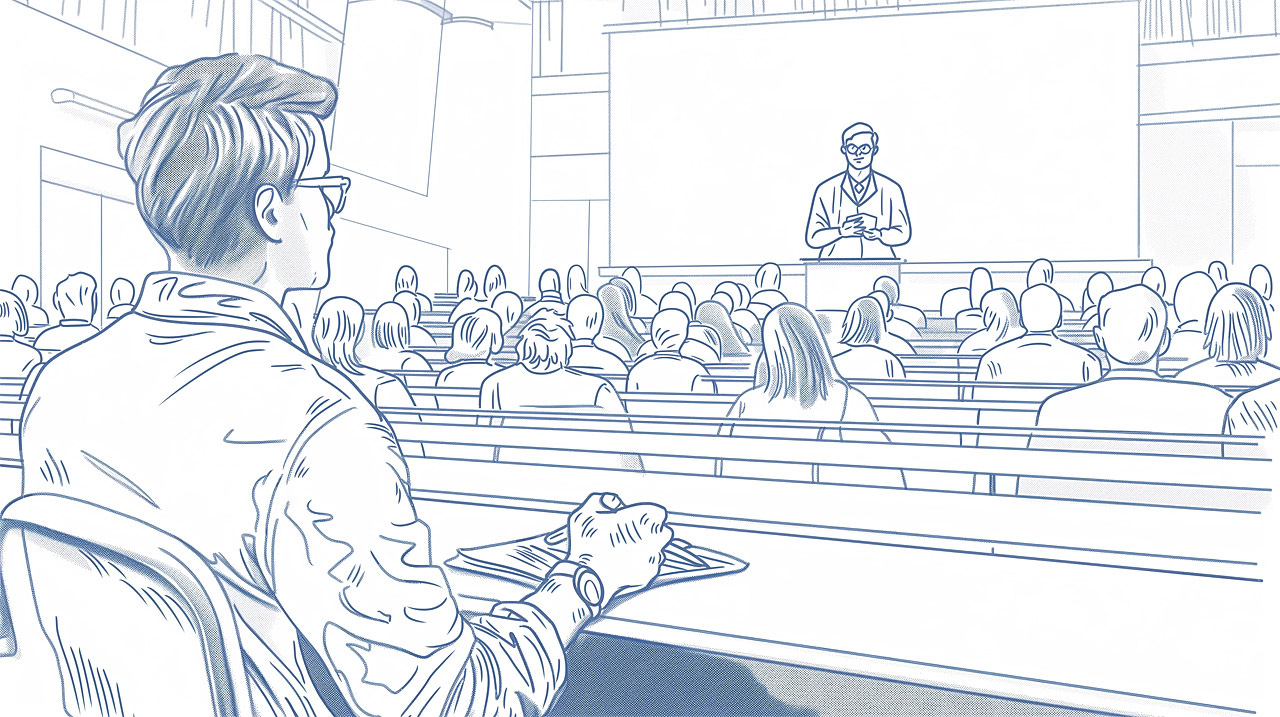Summary: Jakob Nielsen’s 10 usability heuristics were defined from a factor analysis of the use of a much larger set of usability principles to explain a database of usability problems in development projects. The 10 heuristics in the final list from 1994 had the greatest explanatory power in this analysis, which is why they are still useful today.
2024 marks the 30-year anniversary of the 10 usability heuristics. (See the infographic at the end of this article for a summary of the heuristics, if you can’t recall them. In fact, reducing the requirements for users to recall information is heuristic 6.)
I have seen several misconceptions in recent years of how the heuristics were derived, so I want to set the record straight in this anniversary year. The worst misconception is that the heuristics are not research-based but are simply my opinion. A second misconception is that since the heuristics are from 1994, they are not relevant for modern user interfaces.
The Initial Heuristics: 1989
The very first set of 10 usability heuristics were, in fact, a matter of opinion. They were developed in 1989 when I taught the first user interface course at the Technical University of Denmark with Rolf Molich. We needed a way to classify usability problems when grading student exercises, so we came up with a set of 10 heuristics as our rubric. I admit it: this initial list was the best thinking that two solid UX professors could produce, but it wasn’t the result of a systematic research process, other than sitting around a table and talking.
The first list of 10 heuristics was the basis for the early research into the heuristic evaluation and was published in my early papers about the method. It gained a fair amount of uptake, making it clear to me that it would be useful to refine the method.
The initial list of usability heuristics was developed to support teaching a user interface course at the Technical University of Denmark. (Midjourney)
In 1990, I moved from the university to Bell Communications Research, the telephone company research lab in the United States.
The Final Heuristics: 1994
Five years after the initial, informally-derived, list of heuristics, it was time to produce an optimized list of heuristics grounded in systematic research. My additional research on usability methodology at Bellcore had made it clear that heuristic evaluation was here to stay. At one point, I did a survey of UX professionals to learn what UX methods they used, and heuristic evaluation was the second-most popular method, after user testing.
(This is a good place for me to correct another misunderstanding, which is that I was promoting heuristic evaluation as a replacement for user testing. Anybody who has followed my work knows that I am a strong proponent of user testing, especially of the simplified kind that aims at qualitative insights through testing about 5 users in each round. In my overview of how to execute user experience projects, I even stated that user testing is the number-one usability method. Heuristic evaluation is a supplement to user testing, not a replacement.)
Based on this systematic method, which I’ll describe in the next section, I made several changes to the heuristics, and the resulting revised list of 10 new usability heuristics is the one I have been using for the last 30 years.
Deriving Usability Heuristics through Factor Analysis
One benefit of working at the telephone company was that I had access to a large amount of UX work conducted both in our advanced research group and in many product development teams, working on anything from consumer-facing telephony products to large-scale enterprise software. (Phone companies are big. Their software development projects are big.)
I took advantage of these connections to collect a database of 249 usability problems that had been identified through previous evaluations in 11 very different projects. This was not student work: these were design flaws made by professional UX designers working on multi-million dollar important development projects. Skilled designers absolutely introduce usability problems in their initial designs: nobody can create a perfect UI on their first try. This is why we conduct user testing, and this is also why it’s useful to have usability heuristics for further analysis and refinement of the initial designs.
I also collected a database of 101 fundamental usability principles. This was done through a review of the existing user interface research literature. This set of principles included both commercially important usability lessons, such as the design principles for the Xerox Star (the world’s first major graphical user interface) and the Apple Macintosh (the first commercially successful graphical user interface), and academically-grounded results, such as the claims analysis of John M. Carroll and Mary Beth Rosson (IBM Research) and the cognitive principles of Peter Polson and Clayton Lewis (University of Colorado). I also included the initial list of heuristics. Much as it was informally derived, it had proven its worth in 5 years of subsequent work.
I scoured the HCI research literature to collect the most important fundamental usability principles discovered by other researchers in the past. (Artistic reconstruction: Midjourney)
I combined the two databases — usability problems and usability principles — to derive a matrix of how well each usability principle explained each design flaw. I then conducted a factor analysis of the 25,149 datapoints in this matrix to find a small number of vectors that best spanned this multidimensional space.
Factor analysis is a statistical method used to understand and reduce the complexity of data. Imagine you’ve conducted a survey with lots of questions to figure out what makes a smartphone appealing to people. You might have questions about battery life, screen size, camera quality, brand, price, and so on. Instead of looking at each of these separately, factor analysis helps you group related questions together to identify a few underlying factors that influence people’s preferences. For instance, battery life and screen size might combine into a factor you could call “everyday utility,” while camera resolution and brand might form another factor called “bragging rights.” This way, instead of juggling dozens of individual aspects, you can focus on just a few key themes that capture the essence of what people care about.
The way factor analysis does this is by examining how all your variables correlate with each other. Suppose two dimensions tend to get similar values for most of the rated items (like high ratings for both battery life and screen size). In that case, the method suggests they are related and might represent the same underlying factor (like “everyday utility”). By analyzing all the correlations among variables, factor analysis sorts them into groups, each representing a hidden factor. These factors then guide you in better understanding the important issues within a multidimensional space where the detailed data is overwhelming. It’s like finding the recipe for a complex dish by tasting it and identifying the main ingredients that give it its unique flavor.
My factor analysis of how 101 usability principles explained 249 usability problems distilled this complex space down to 10 factors that explained most of the problems, though by no means all. The result was the 10 usability heuristics we know and love today.
I used factor analysis to distill a large set of usability principles down to a core set that best spanned the multidimensional space of design flaws in real development projects (Midjourney).
Why There are 10 Heuristics
As just mentioned, the 10 heuristics provided the best possible explanatory coverage of the space of usability problems I analyzed. But they definitely could not explain everything. Having, say, 20 heuristics would have provided a little better coverage, but not enough to justify doubling the list.
My distilling work condensed the large set of usability insights into the current list of 10 usability heuristics. (Midjourney)
Admittedly, the exact number 10 is somewhat arbitrary. 9 would have been almost as good, and 12 would have been a little better. But it was important to me to keep the number manageable. By now, we have thousands of usability guidelines for minute details of most user interface design questions. For example, the Baymard Institute has 10 usability guidelines just for the display of product images on an ecommerce site’s product pages. I discussed one of these guidelines (visualize the size of objects by showing them in context) in a recent newsletter. This is a useful guideline, but it will do you no good if you’re designing, say, collaboration software to coordinate project teams who work remotely. I wanted something more general for the heuristics, because they were intended to be useful for all design projects.
Also, the guideline to show a photo of the product in context might easily superseded one day by guidelines to better visualize the size of the product in an augmented reality UI.
I wanted a compact list of the most important and most general principles, so that it would be manageable, memorable, and mature enough to last a long time.
Is this handbag about the size you want? This image showing it in the context of being carried by a person through the streets of London gives you a very good idea, inspiring enough confidence to click that all-important “add to cart” button. While showing such pictures is a great guideline for e-commerce designers, it’s much too detailed to make it into a long-lasting list of usability heuristics. (Midjourney)
Why the 10 Heuristics Still Work
30 years later, today’s user interfaces are notably different than what was found in the development projects that fed my database of usability problems. But the 10 heuristics remain the same and remain relevant. They are as durable as if they had been engraved on a rune stone.
Jakob Nielsen’s 10 usability heuristics might as well be engraved on rune stones. They have proven almost as durable as the memorials raised by my bloodthirsty Viking ancestors. (Dall-E)
The 10 heuristics have durability because of the method I used to derive them in 1994: to gain the greatest explanatory power across a wide range of usability problems. The factor analysis created heuristics that are grounded in the fundamental mismatches between humans and machines and not in any individual screen designs or UI technologies.
The 10 heuristics have continued to work well across 30 years that have seen major changes in user interfaces, including the web and mobile devices. They don’t specifically speak to the problems of, say, mobility or small screens, but they tell us what it takes to communicate with users, no matter the platform.
When something has worked for a very long time, it’s always been my philosophy that it will be likely to continue to work for many more years. That’s what I believe about the 10 heuristics. There is no need to change them now, even after 30 years, and there will likely be no need to change them for many more years to come.
The 10 usability heuristics have deep roots, which is why they have proven to be long-lasting. (Dall-E)
My One Regret: The Name “Heuristics”
On the whole, I am satisfied with my 10 heuristics. I do have one regret, which is the very name “heuristics.” This word has proven difficult to understand, especially for UX professionals who don’t speak English as a native language.
I picked this term because it explains the status of the heuristics very well: they are rough rules of thumb that tell us what’s generally true, but they don’t define the specifics of a design. That’s the job of detailed usability guidelines, which are also a very useful element in our extensive UX toolbox. Heuristics may even conflict at times, exactly because they are broad and general. We have many goals in UX design, and we can’t always achieve them all to the same degree. It’s the hallmark of the seasoned UX professional that he or she is capable of making the necessary tradeoffs when the heuristics conflict.
Even though “heuristics” is not the perfect word, it’s now been used for so many decades that I’m not changing it. I detest vocabulary inflation, and I’m not about to inflict changes in established terminology on our field.
There you have it: the 10 heuristics continue to work because they have a solid foundation. They have proven themselves for 30 years. And they will still be named “heuristics.”
Even though the very word “heuristic” was an unfortunate choice, it’s now so ingrained in the UX terminology that I’m sticking to it to avoid causing vocabulary inflation and coining more confusing words that you have to learn. (Ideogram)
The 10 Usability Heuristics in One Infographic
Feel free to copy or reuse this infographic, provided you give this URL as the source.
Reference
Jakob Nielsen (1994): “Enhancing the explanatory power of usability heuristics,” in CHI '94: Proceedings of the SIGCHI Conference on Human Factors in Computing Systems, pp. 152-158. https://doi.org/10.1145/191666.191729
About the Author
Jakob Nielsen, Ph.D., is a usability pioneer with 41 years experience in UX and the Founder of UX Tigers. He founded the discount usability movement for fast and cheap iterative design, including heuristic evaluation and the 10 usability heuristics. He formulated the eponymous Jakob’s Law of the Internet User Experience. Named “the king of usability” by Internet Magazine, “the guru of Web page usability” by The New York Times, and “the next best thing to a true time machine” by USA Today. Previously, Dr. Nielsen was a Sun Microsystems Distinguished Engineer and a Member of Research Staff at Bell Communications Research, the branch of Bell Labs owned by the Regional Bell Operating Companies. He is the author of 8 books, including the best-selling Designing Web Usability: The Practice of Simplicity (published in 22 languages), the foundational Usability Engineering (26,717 citations in Google Scholar), and the pioneering Hypertext and Hypermedia (published two years before the Web launched). Dr. Nielsen holds 79 United States patents, mainly on making the Internet easier to use. He received the Lifetime Achievement Award for Human–Computer Interaction Practice from ACM SIGCHI and was named a “Titan of Human Factors” by the Human Factors and Ergonomics Society.
· Subscribe to Jakob’s newsletter to get the full text of new articles emailed to you as soon as they are published.













Did Tog have any influence on the 10 heuristics?